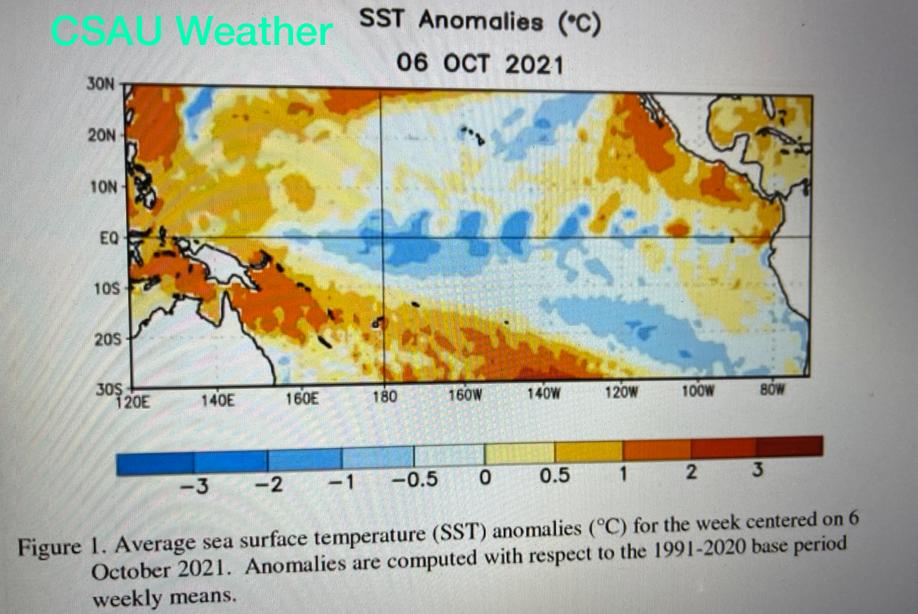Kanpur, 29 October: The Southwest Monsoon this year has been delayed due to ocean activities. Not only this, due to its effect, the month of October received the highest rainfall in the last 36 years. Now the Meteorological Department has issued this forecast that this year there will be a severe winter in India.
Regarding the reason behind this, the Meteorological Department believes that the effect of a natural phenomenon in the Pacific Ocean, ie “La Lina” storm, can cause extreme cold. Because of the effect of “La Nina”, the winds blow towards the northeast. During this, western disturbances are more, due to which rain and snowfall in the north-west and cold wave starts.
According to the Met, one of the visible side effects of climate change is the “La Nia” effect. Changes are triggered by the “El Nina” in the Pacific Ocean and its effects are seen in many parts of the world, which appear in the form of unusual to extreme weather. After the departure of monsoon from India recently, people may have to face very cold very soon.
The Meteorological Department said that this time the outbreak of cold is going to be more severe than in the last few years. While the monsoon usually returns from all over India by October 15, this time it was late. Not only this, it is now being estimated that this year the cold in India will also cause more chills among the people.
The Indian Meteorological Department also stated that the cold this time is going to be more severe than the last few years. This estimate is being made due to the changes in the weather in the far Pacific Ocean which will have an impact on the entire world; these changes are coming due to the La Nina effect.
This is the meaning of the word La Nina
“La Nina” is a Spanish word which means little girl. It is part of a complex process called the “El Nino” Southern Oscillation (ENSO) cycle that occurs in the Pacific Ocean that has an impact on climates around the world. The second of this process is called El Nino (Small child in Spanish), which has the exact opposite effect of La Nina.
Geography of the Pacific Ocean
The geography of the Pacific Ocean plays an important role throughout this cycle, which extends from the Americas to Asia and Australia. ENSO brings about unusual changes in the water and air on the surface of the Pacific Ocean. It affects the patterns of precipitation, temperature and air circulation all over the world. While “La Nina” is seen as a cooling effect of ENSO, “El Nino” is seen as a warming effect.
In a year with a “La Nina” effect, the wind blows faster in winter, causing the waters near the equator to be cooler than normal. For this reason, the temperature of the ocean changes by affecting the weather of the whole world. Monsoons with heavy rains in India, droughts in Peru and Ecuador, heavy floods in Australia and high temperatures in the Indian and West Pacific Oceans are the cause of “La Nina”.
This time “La Nina” is active. Dr SN Sunil Pandey, Meteorologist of Chandrashekhar Azad University of Agricultural Technology (CSA), said that its effect will not be in the form of continuous low temperature in India, but in the form of intermittent cold wave. The effects of “La Nina” and “El Nino” occur between 09 and 12 months. They recur randomly every two to seven years. El Nino is seen more often than “La Nina”.
The effect of La Nina occurs in the winter season
According to CSA meteorologist, the effect of La Nina in India is on the winter season of the country. In this season the winds blow from the north-east of the land, which is accompanied by south-westerly jets in the high atmosphere. But during El Nino, this jet is pushed to the south. There are more Western Disturbances than this, which bring rain and snowfall in Northwest India. But La Nina creates a system of low pressure in the north and south, which brings air from Siberia and cools further south.
La Nina situation was created till April last year
The Indian Meteorological Department has also predicted a cold winter this year and blamed La Nina for it. The department had already said that India may experience more than normal seasonal rains and severe winters.
The department said that in August and September, there may be more rain than normal and only then La Nina conditions will arise.
Let us tell you that the last time La Nina conditions were made from August-September 2020 to April 2021 and there was more rain than normal and winters had started early, as well as there was a severe winter. According to the Meteorological Department, La Nina conditions will prevail from September to November this year, which will lead to freezing cold during this year’s winter





